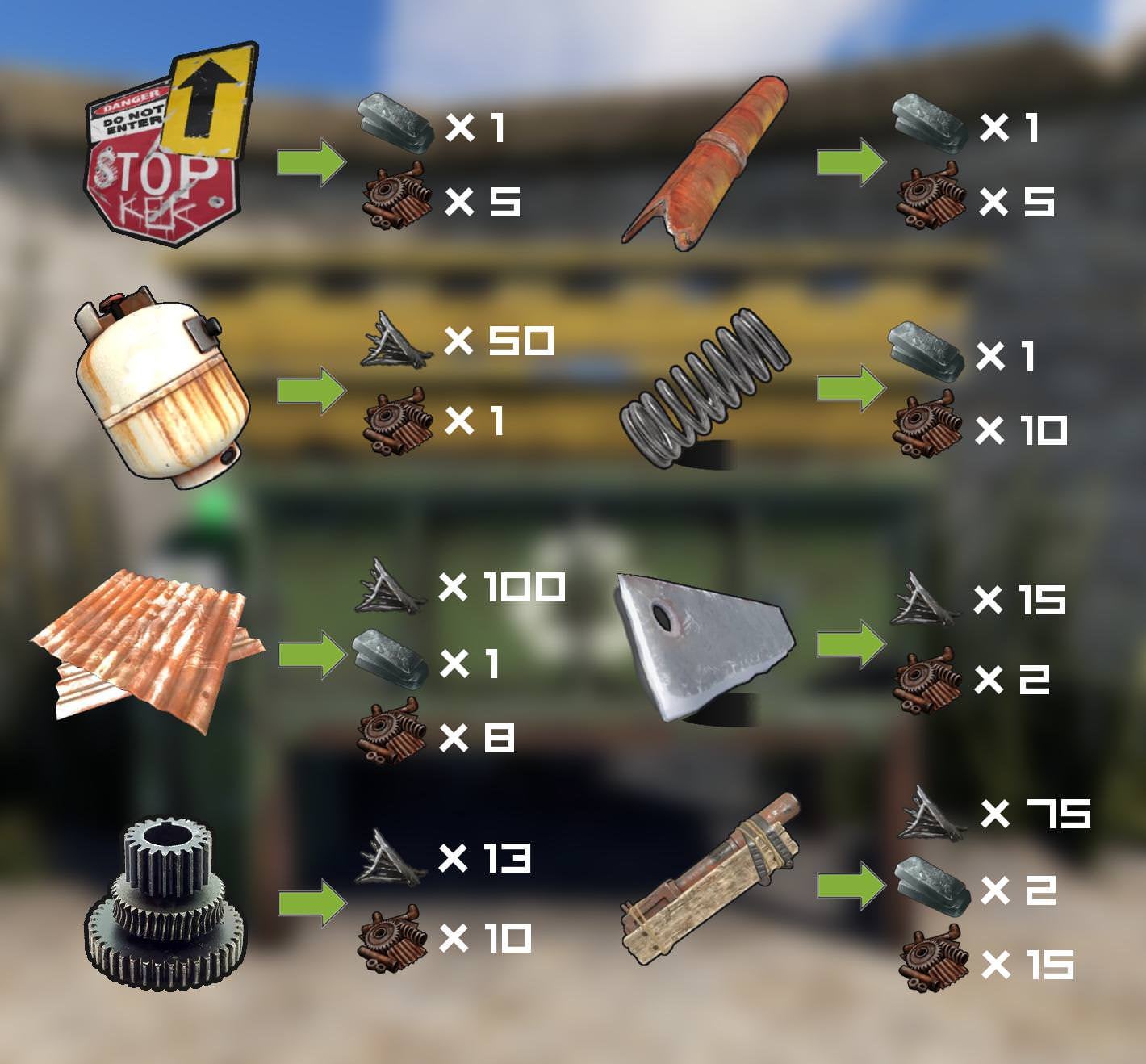To use recycler rust, you need to have the Rust program installed on your computer. Once you have Rust installed, you can download the Recycler Rust tool from the official website. After downloading the tool, you need to unzip it and then double-click on the “recycler” file to launch the tool.
Once launched, recycler rust will ask you for a directory that contains your Rust project files. You need to specify the path to your project’s root directory. After that, recycler rust will start scanning your project files for unused code and dependencies.
Once the scan is complete, recycler rust will provide you with a report of all unused code and dependencies in your project.
- Before using recycler rust, it is important to ensure that all other food sources have been removed from the area
- This will help prevent any further contamination
- Once all food sources have been removed, begin by spraying the affected area with water
- This will help loosen any debris that may be clinging to the surface
- Next, use a stiff brush to scrub away any remaining rust stains
- Be sure to rinse the area thoroughly afterwards to remove any residual cleaner
- Finally, allow the area to dry completely before using recycler rust again
Rust Recycling Calculator
If you’re like most people, you probably have a lot of rust around your home. But did you know that rust can be recycled?
Yes, it’s true!
Rust can actually be reused and recycled into new products. And there’s even a Rust Recycling Calculator to help you figure out how much rust you have and what it’s worth.
Here’s how it works: First, simply enter the weight of your rust in pounds.
Then, select the type of recycling process you want to use. The calculator will then provide an estimated value for your recyclable rust.
It’s that easy!
So if you have some rust around your home, don’t throw it away – recycle it!

Credit: www.youtube.com
How Does Recycler Work in Rust?
In Rust, the recycler is a garbage collector that reclaims memory from objects that are no longer in use. It works by keeping track of all the objects that are currently allocated in memory and then periodically scanning them to see which ones are no longer reachable from any live object. Once an object is determined to be unreachable, the recycler will free its memory so that it can be reused for other purposes.
The recycler is designed to be efficient and minimise fragmentation, so it will only scan objects that are likely to be garbage. This means that it generally doesn’t have to scan all of memory every time it runs, which can make it much faster than a traditional garbage collector.
One downside of the recycler is that it can’t reclaim memory from objects that contain pointers to live objects.
This means that if you have a data structure with a lot of pointers (such as a linked list), the recycler won’t be able to reclaim all of the memory used by those structures when they’re no longer needed. However, this downside is mitigated by the fact that Rust’s ownership system ensures that such data structures will only exist for as long as they’re needed; once they’re no longer being used, they’ll automatically be deallocated without needing to go through the recycler.
How Do You Use the Recycler in Rust Console?
In the Rust console, you can use the Recycler to recycle any junk or unwanted items that you may have. To do this, simply select the item or items you wish to recycle and press the “Recycle” button. The Recycler will then break down the selected items into their component parts, which can be used to craft new items or build structures.
How Do You Use a Recycler?
Assuming you would like tips on using a Recycler:
A recycler is a great way to upcycle materials and reduce your environmental footprint. Here are some tips on how to use a recycler:
1. Sort your materials. Most recycling facilities require that materials be sorted before they can be accepted. This usually means separating out paper, plastic, metal, and glass.
2. Rinse food containers. Be sure to rinse out any food containers before recycling them – this will help keep the facility clean and prevent pests!
3. Avoid hazardous materials.
Some materials, such as batteries and electronics, can be recycled but may require special handling due to their hazardous nature. Check with your local facility to see what they accept before bringing in any potentially dangerous materials.
4. Keep it clean!
Since recyclables are often sorted by hand, it’s important to keep them clean and free of debris so that the sorting process is as easy (and safe) as possible for workers.
How Do You Recycle Scraps in Rust?
Rust is a systems programming language that focuses on performance and safety. It is often used in web browsers, operating systems, file systems, and embedded devices. The language has been gaining popularity in recent years due to its focus on memory safety and its ability to prevent segfaults.
One of the benefits of Rust is its built-in support for recycling memory. This means that when a program allocates memory, it can be automatically deallocated when it is no longer needed. This system makes it easy to avoid memory leaks, which can cause programs to crash or consume large amounts of resources.
In order to recycle scraps in Rust, you need to use the GC module. The GC module provides functions for allocate and deallocate objects. It also provide automatic garbage collection for reclaiming memory that is no longer being used by your program.
Conclusion
Recycler rust is a new Rust library that makes it easy to recycle data structures. It’s designed to be used with the standard library’s collections and provides an API that is familiar to Rust developers.
The Recycler rust library provides two main types of objects: Recycler and Collector.
The Recycler type is used to manage the memory for a data structure, while the Collector type handles the actual recycling of data.
To use recycler rust, you first need to create a Recycler object. This is done by passing in a closure that allocates a new instance of the data structure being recycled.
The recycler object will then call this closure whenever it needs to allocate a new instance of the data structure.
Next, you need to create a Collector object. This is done by passing in a closure that accepts an instance of the data structure being recycled and returns true if the collector should recycle it.
The collector object will then call this closure on each instance of the data structure that is passed into its collect method.
Finally, you can use the recycler and collector objects together by calling the collect method on the recycler and passing in an instance of the data structure being recycled.
- Test Post 2022-12-09 - February 14, 2024
- How to Run in Pokemmo - February 13, 2024
- How Much is My Lol Account - February 13, 2024


